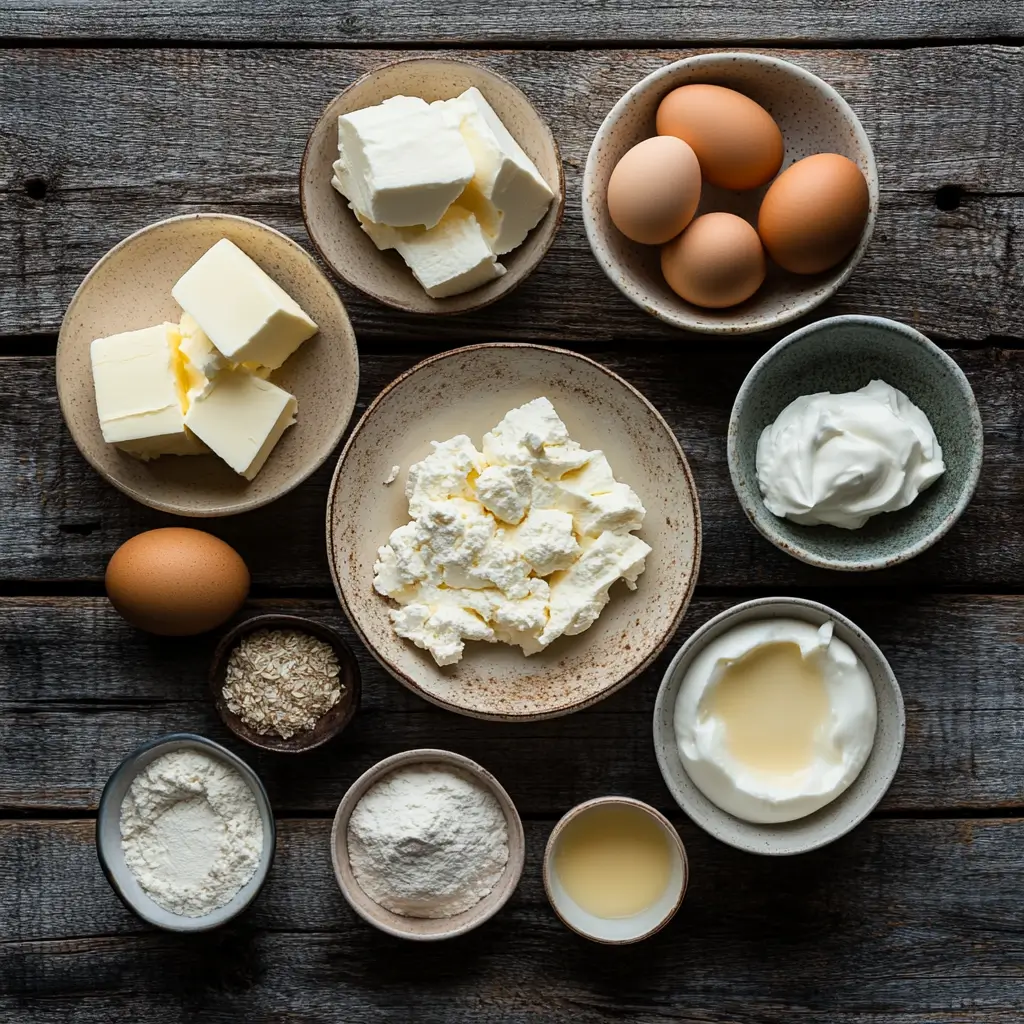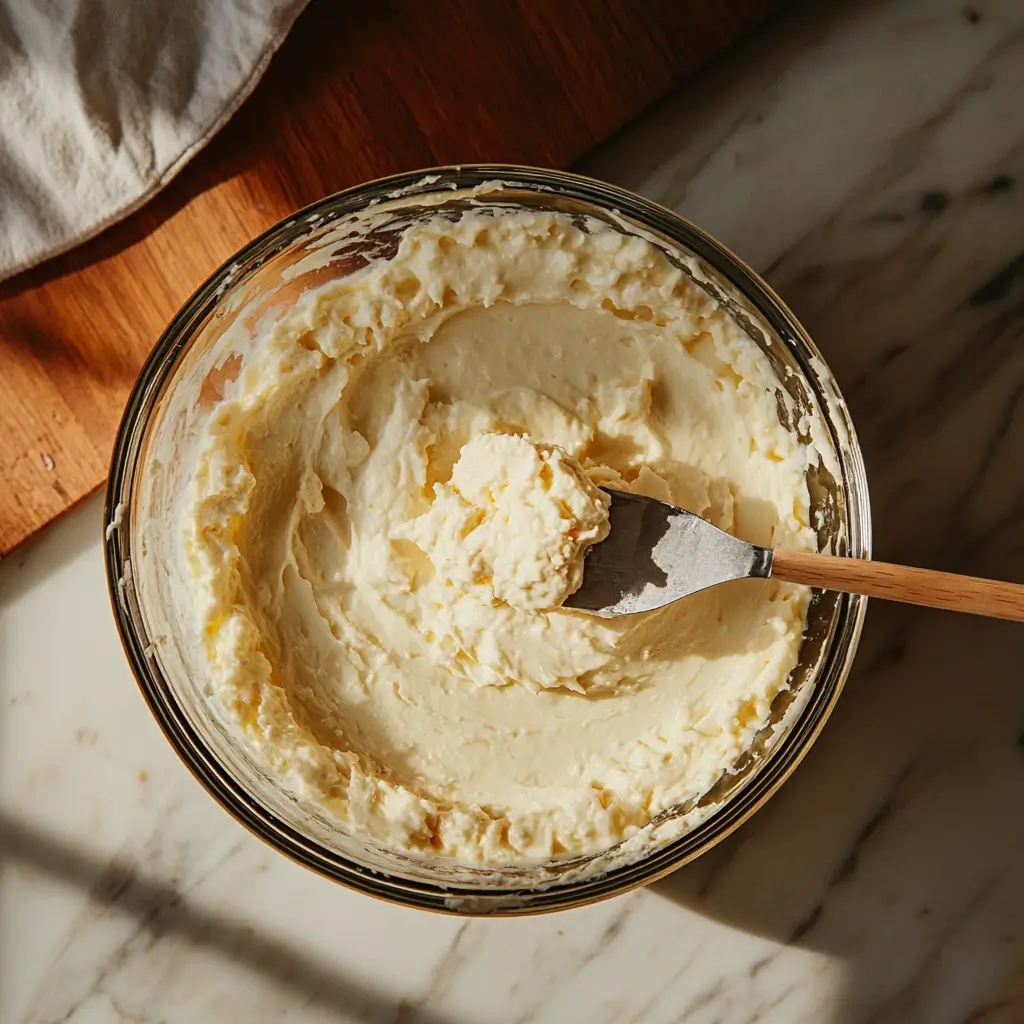Cheesecake is one of those desserts that evokes comfort and indulgence. However, when you’re managing diabetes, you may hesitate to reach for that creamy slice. Understandably, questions like “Can diabetics have cheesecake?” become more than casual curiosity—they become part of daily decision-making. Thankfully, modern recipes, smarter ingredients, and better understanding of blood sugar dynamics have made it possible for people with diabetes to enjoy cheesecake in a responsible, satisfying way.
For instance, traditional cheesecake relies heavily on sugar and processed carbs, which can spike blood sugar levels. But nowadays, sugar-free alternatives and low-carb ingredients can make all the difference. With careful planning and intentional choices, you don’t have to give up dessert. Instead, you can learn how to reframe it. This guide explores how to safely incorporate cheesecake into a diabetic lifestyle with real tips, science-backed strategies, and a detailed recipe that won’t compromise your blood sugar.
Understanding Cheesecake and Diabetes: Can They Coexist?
At first glance, cheesecake and diabetes might seem like total opposites. Cheesecake typically contains sugar, flour-based crusts, and dairy—all ingredients that raise concerns for someone watching their blood sugar. Nevertheless, when you dive deeper, you’ll find that the dessert’s structure actually allows for customization. Because cheesecake’s richness comes primarily from fats like cream cheese and eggs, it offers a unique foundation to build a lower-carb version.
Surprisingly, fat slows down how fast sugar enters your bloodstream. Consequently, when cheesecake is made without added sugars and with healthy fats, it becomes a viable dessert option for many diabetics. Likewise, substituting regular crust with almond flour or crushed nuts dramatically lowers the glycemic load.
Take, for example, Sarah, a 52-year-old teacher diagnosed with type 2 diabetes. Initially, she gave up all desserts. Eventually, she discovered a sugar-free cheesecake recipe using monk fruit and almond flour crust. “It tasted just like the real thing,” she said. “But it didn’t make me feel sluggish or spike my blood sugar.” Her story shows how rethinking ingredients can unlock both taste and safety.
In fact, just as traditional desserts are being transformed to support better blood sugar control, innovative recipes like no-bake sugar-free strawberry cheesecake show how indulgence and health can go hand in hand. This type of dessert eliminates added sugar while keeping the creamy texture and fruity flair that cheesecake lovers adore. Explore how this no-bake option redefines dessert for diabetics.

Can Diabetics Eat Sugar-Free Cheesecake?
Absolutely, diabetics can enjoy sugar-free cheesecake, especially when it’s prepared with smart substitutions. The most critical element in crafting a diabetic-friendly cheesecake is the sweetener. For example, traditional sugar is high on the glycemic index, but alternatives like stevia, erythritol, and monk fruit have little to no effect on blood glucose.
Furthermore, sugar-free cheesecakes often include ingredients that support satiety, like eggs and healthy fats. These help prevent overeating and reduce cravings later. Notably, many diabetics find that after switching to sugar-free desserts, they experience fewer blood sugar crashes and more energy throughout the day.
Let’s consider the case of Miguel, a 45-year-old freelance writer. He switched to sugar-free desserts after experiencing frequent spikes from traditional sweets. “Once I tried a low-carb cheesecake, I didn’t miss the sugar at all,” he noted. “It gave me the same satisfaction, but without the crash afterward.”
Moreover, the rise of health-conscious dessert options mirrors a larger wellness movement where flavor and function go hand in hand. Just as recipes like the natural Mounjaro-inspired dish blend nutritious ingredients with bold taste, cheesecake is also being reimagined to support dietary needs without compromising indulgence. Discover how this innovative recipe reflects the future of feel-good food.
What Kind of Cheesecake Can Diabetics Eat Without Risk?
When it comes to cheesecake, not all versions are created equal. For diabetics, the safest option is a low-carb, high-fat version with zero added sugar. Typically, this type of cheesecake uses almond or coconut flour for the crust and stevia or erythritol for sweetness. Consequently, the total carbohydrate count is significantly lower.
To make this dessert even healthier, you can use full-fat dairy. Though it might sound counterintuitive, full-fat cream cheese and sour cream offer better satiety and fewer additives than their low-fat counterparts. That means fewer fillers and less sugar to worry about.
As an illustration, imagine replacing graham cracker crust with crushed walnuts, cinnamon, and a bit of coconut oil. Not only does this cut down on carbs, but it also boosts flavor and adds fiber. Similarly, using lemon zest or vanilla bean extract can intensify the flavor without relying on sugar.
Here’s a quick tip: always portion your slices before serving. Pre-cutting cheesecake helps with portion control, especially when it’s so tasty that a second slice seems inevitable.

Ingredients and Instructions for a Diabetic-Friendly Cheesecake Recipe
A diabetic-friendly cheesecake starts in the pantry. Before you even turn on the oven, it’s essential to gather the right ingredients. This recipe focuses on whole-food components and natural sweeteners. Each element plays a key role in flavor, texture, and blood sugar control.
Ingredients Table
| Ingredient | Amount | Notes |
|---|---|---|
| Cream cheese | 16 oz | Use full-fat for richness and satiety |
| Almond flour | 1.5 cups | Substitutes high-carb crust |
| Erythritol | 1 cup | Natural sweetener, zero glycemic impact |
| Eggs | 3 large | Adds structure and protein |
| Sour cream | ½ cup | Optional, for smoother texture |
| Vanilla extract | 1 tsp | Enhances flavor naturally |
| Lemon juice | 1 tbsp | Brightens and balances richness |
Preparation Instructions
- Preheat your oven to 325°F (163°C). Meanwhile, line a springform pan with parchment paper or use a non-stick spray to prepare it.
- Make the crust: Combine almond flour with 3 tablespoons of erythritol. Mix thoroughly, then press the mixture firmly into the bottom of the pan. Bake for 10 minutes or until golden. Let it cool before adding the filling.
- Blend the filling: In a separate bowl, beat the cream cheese until smooth. Gradually add the remaining erythritol and mix until combined. Crack in the eggs one at a time, beating slowly after each addition.
- Add flavor elements: Stir in the vanilla extract, sour cream, and lemon juice. Mix just until smooth—overmixing can lead to cracks.
- Assemble and bake: Pour the filling onto the cooled crust. Smooth out the top using a spatula. Bake for 40–50 minutes until the edges are set but the center is slightly jiggly.
- Cool gradually: Turn off the oven and let the cheesecake rest inside with the door ajar for one hour. This helps it settle evenly and prevents cracking.
- Chill before serving: Refrigerate for at least 4 hours, preferably overnight. Before serving, you may top it with a handful of fresh berries or a swirl of sugar-free whipped cream.

Healthiest Cheeses and What to Avoid for Diabetics
Cheese can be your ally or your enemy—depending on the kind you choose. For diabetics, the healthiest cheeses are those that are minimally processed, low in carbs, and high in natural fat. For example, cream cheese, ricotta, and mascarpone are excellent choices. These varieties provide richness without contributing significantly to your daily carb intake.
However, not all cheeses are created equal. Processed cheeses often contain added starches, sugars, or preservatives. These extras can spike blood sugar or add unwanted calories. Always check the label for ingredients like maltodextrin or modified food starch, both of which are red flags.
Let’s take a practical scenario. Suppose you find a cream cheese labeled “light” or “low-fat.” At first, it might sound like a healthier option. However, these products often include added sugar or fillers to make up for the flavor lost when fat is removed. Consequently, these additions can do more harm than good.
Whenever possible, opt for cheese brands with the fewest ingredients. Ideally, you want to see just milk, cream, and salt on the label. Simplicity ensures quality—and helps keep your blood sugar in check.
How to Master Diabetic Cheesecake
Firstly, always allow your cream cheese to come fully to room temperature before mixing. Otherwise, lumps will remain in the batter, and the final texture will suffer. Additionally, use a stand mixer or hand mixer on a low setting. Overmixing incorporates air, which can lead to cracks on the surface. For a silky, stable result, mix gently and stop once ingredients are well combined.
Another tip is to bake the cheesecake in a water bath, also known as a bain-marie. This method surrounds the springform pan with hot water, promoting even heat distribution. Consequently, the cheesecake bakes evenly and retains its moisture. To set up a water bath, wrap the bottom of your pan in foil and place it inside a larger baking dish filled halfway with warm water.
After baking, let the cheesecake cool slowly inside the oven with the door cracked open. This gradual temperature shift helps prevent sinking or cracking. Once it reaches room temperature, refrigerate the cheesecake for at least four hours—ideally overnight. During this time, the flavors meld and the structure firms up.
Serving and Presentation Tips
Now that the cheesecake has set, how you serve it matters just as much as how you made it. Presentation doesn’t need to be complicated, but it does elevate the overall dessert experience. Therefore, follow these helpful tips for clean cuts and gorgeous plating.
Always use a sharp, hot knife. Dip it in hot water and wipe it dry before each slice. This method ensures smooth edges and avoids dragging crumbs through the creamy layers. Likewise, pre-slicing the cake into equal portions not only looks elegant but also supports portion control—especially important for diabetics monitoring carb intake.
As for toppings, go for low-glycemic options. Berries like raspberries, strawberries, and blueberries provide vibrant color and mild sweetness without significantly raising blood sugar. Additionally, a spoonful of sugar-free whipped cream or a sprinkle of cinnamon adds flavor and finesse.
Here’s a creative serving idea: place each slice on a chilled dessert plate and garnish with a mint leaf and a single raspberry. This restaurant-style presentation feels special and encourages mindful eating, which benefits digestion and glucose response.
Pro Tips and Flavor Variations
Beyond the traditional version, diabetic cheesecake can be endlessly customized. Whether you’re craving seasonal spice, deep chocolate notes, or fruity freshness, there’s a variation to match every mood and occasion. Additionally, experimenting with flavors helps prevent boredom and supports sustainable dietary habits.
Expert Tips for Success
- Use parchment rounds: Line your pan to prevent sticking, which makes removal and cleanup much easier.
- Let the cake chill overnight: Although four hours may suffice, chilling overnight allows the best texture and flavor to develop.
- Store it smartly: Cover leftovers with plastic wrap or store slices in an airtight container for up to five days in the fridge.
Flavor Variations
- Chocolate Cheesecake: Add ¼ cup of unsweetened cocoa powder to the batter and top with dark chocolate shavings made from 85% cacao or higher.
- Coconut Cheesecake: Replace half the almond flour with coconut flour in the crust and add a splash of coconut extract to the batter.
- Pumpkin Cheesecake: Mix in ½ cup of pumpkin puree and a teaspoon of pumpkin spice. This version is especially great in fall.
Experimenting with these ideas transforms your dessert experience. Moreover, it supports dietary diversity, making it easier to enjoy your favorite foods without compromising blood sugar goals.
Common Mistakes When Making Diabetic Cheesecake
Although diabetic cheesecake can be simple, a few common mistakes can derail the results. Accordingly, being aware of these pitfalls helps ensure every batch turns out as intended.
Mistake 1: Choosing the Wrong Sweetener
Some sugar substitutes may seem “sugar-free” but still impact blood sugar. For example, maltitol often raises glucose levels despite being labeled as a sugar alcohol. Therefore, stick to sweeteners like erythritol, monk fruit, or stevia, all of which have little to no effect on blood glucose.
Mistake 2: Using a High-Carb Crust
Many recipes rely on graham crackers or cookies for the crust. Unfortunately, these are high in refined carbs. Instead, using almond flour, crushed pecans, or shredded coconut lowers the glycemic impact while offering great texture and taste.
Additionally, keep an eye on labels. Even seemingly innocent ingredients can contain hidden sugars or starches. For instance, “low-fat” or “light” cream cheese may include fillers that raise carb content. Always read the nutrition label and ingredient list thoroughly before adding anything to your recipe.
This approach mirrors how health-conscious meals—like street corn variations—are now adapted with plant-based or fiber-rich twists. Therefore, cheesecake can evolve similarly without losing its classic appeal.
Is Cheesecake Healthier Than Cake for Diabetics?
At first glance, comparing cheesecake to cake may seem like comparing two indulgences. However, from a nutritional standpoint, cheesecake—when prepared with diabetic-friendly ingredients—often comes out ahead. Moreover, its fat and protein content make it a slower-digesting food, which helps moderate blood sugar levels.
For instance, a classic frosted cake slice can contain over 30 grams of sugar and spike insulin responses quickly. Conversely, a well-prepared diabetic cheesecake with erythritol and a nut-based crust may have under 8 grams of net carbs per slice. Consequently, this difference helps diabetics better manage their dietary intake and avoid glucose crashes.
Also, cheesecake’s richness provides satiety. Because it’s more filling, people often eat smaller portions. In contrast, traditional cake can encourage overeating due to its sugar rush and quick drop in blood glucose.
Furthermore, it’s easier to customize cheesecake for low-carb or keto lifestyles. While cake often relies on flour and sugar, cheesecake allows you to substitute nearly every ingredient without sacrificing texture. Hence, with the right tweaks, cheesecake becomes a smarter choice in diabetic meal planning.
FAQs – Can Diabetics Have Cheesecake?
Can diabetics eat sugar free cheesecake?
Yes, diabetics can safely enjoy sugar-free cheesecake when it’s made with ingredients like almond flour and erythritol. Additionally, pairing it with protein-rich meals can further stabilize glucose levels.
What kind of cheesecake can diabetics eat?
Diabetics should focus on low-carb, sugar-free cheesecakes using nut flours and sugar substitutes. For example, a no-bake keto cheesecake with full-fat dairy is a reliable, blood sugar–friendly option.
What sweet treats can diabetics eat?
Diabetics can enjoy options like avocado chocolate mousse, chia pudding, almond flour cookies, and sugar-free cheesecake. Moreover, focusing on fiber and healthy fats keeps blood sugar stable.
Is cheesecake healthier than cake for diabetics?
Yes, especially when made without sugar and high-carb crusts. Cheesecake’s protein and fat content slows digestion, making it less likely to spike blood sugar compared to cake.
What dessert won’t spike my blood sugar?
Sugar-free desserts using erythritol or stevia, such as no-bake cheesecake or dark chocolate almond bark, are less likely to raise glucose levels quickly. Also, adding fiber or protein helps reduce spikes.
What cheese should a diabetic avoid?
Diabetics should avoid highly processed cheeses with fillers, starches, or added sugars. Instead, choose simple cheeses like full-fat cream cheese or ricotta, which have minimal carbs and better nutritional profiles.
Can I use honey in diabetic cheesecake?
No, honey is high in natural sugar and has a high glycemic index. As a result, it can raise blood sugar levels quickly. Instead, use diabetic-safe sweeteners like stevia or monk fruit.
Is fruit topping okay for diabetics?
Yes, but in moderation. Fresh berries are low in sugar and high in fiber, making them a good choice. Avoid canned or syrup-based toppings, which often contain hidden sugars.
Can diabetics have cheesecake?
Absolutely, diabetics can have cheesecake when it’s made with appropriate ingredients. By using sugar-free sweeteners and nut-based crusts, this dessert becomes safe and satisfying for most diabetic diets.
Conclusion – Can Diabetics Have Cheesecake? Yes, With Smart Choices
In conclusion, the question “Can diabetics have cheesecake?” is answered with a resounding yes—when made with the right ingredients and enjoyed mindfully. Through thoughtful substitutions like almond flour, erythritol, and full-fat cream cheese, diabetics can enjoy this indulgent treat without sacrificing their health.
Moreover, the flexibility of this dessert allows for endless flavor variations, creative presentations, and enjoyable meal pairings. Whether you’re newly diagnosed or simply trying to manage your sugar better, learning how to prepare diabetic-friendly cheesecake empowers you to celebrate without guilt.
This comprehensive guide equips you with everything you need—from ingredients and techniques to tips, variations, and science-backed insights. By embracing these changes, you don’t give up on dessert. Instead, you take control of it.
Table of Contents

Can Diabetics Have Cheesecake?
- Total Time: 70 minutes
- Yield: 1 9-inch cheesecake
Description
This diabetic-friendly cheesecake is a rich, creamy, and guilt-free dessert made with wholesome ingredients and natural sweeteners. Designed to support blood sugar control, this recipe skips the traditional high-carb crust and sugar without sacrificing flavor. Almond flour, erythritol, and full-fat dairy come together for a satisfying treat that’s perfect for those watching their carbs. Whether you’re managing diabetes or simply looking for a healthier dessert, this cheesecake delivers indulgence with balance.
Ingredients
16 oz cream cheese (use full-fat for richness and satiety)
1.5 cups almond flour (for a low-carb crust alternative)
1 cup erythritol (natural sweetener with zero glycemic impact)
3 large eggs
½ cup sour cream (optional, for smoother texture)
1 tsp vanilla extract
1 tbsp lemon juice
Instructions
Preheat your oven to 325°F (163°C). Prepare a springform pan by lining it with parchment paper or spraying with non-stick spray.
Make the crust: In a bowl, mix the almond flour with 3 tablespoons of erythritol. Press the mixture firmly into the bottom of the prepared pan. Bake for 10 minutes or until golden. Remove and let cool completely.
Prepare the filling: In a large bowl, beat the cream cheese until smooth. Gradually add the remaining erythritol and mix until fully combined.
Add the eggs one at a time, mixing slowly after each addition to maintain a smooth texture.
Stir in the vanilla extract, sour cream (if using), and lemon juice. Mix gently until just combined—do not overmix.
Pour the filling over the cooled crust and smooth the top with a spatula.
Bake for 40–50 minutes, or until the edges are set and the center is slightly jiggly.
Turn off the oven and leave the cheesecake inside with the door slightly open for 1 hour to cool gradually and prevent cracking.
Refrigerate for at least 4 hours or overnight before serving. Top with fresh berries or sugar-free whipped cream if desired.
Notes
For a firmer texture, chill the cheesecake overnight. You can customize the crust with crushed walnuts or pecans for added flavor. Avoid overmixing the batter to prevent air bubbles and cracking. Store leftovers in the refrigerator for up to 5 days.
- Prep Time: 20 minutes
- Cook Time: 50 minutes
- Category: Dessert
- Cuisine: American
Nutrition
- Calories: 270
- Fat: 23g
- Carbohydrates: 5g
- Protein: 7g
